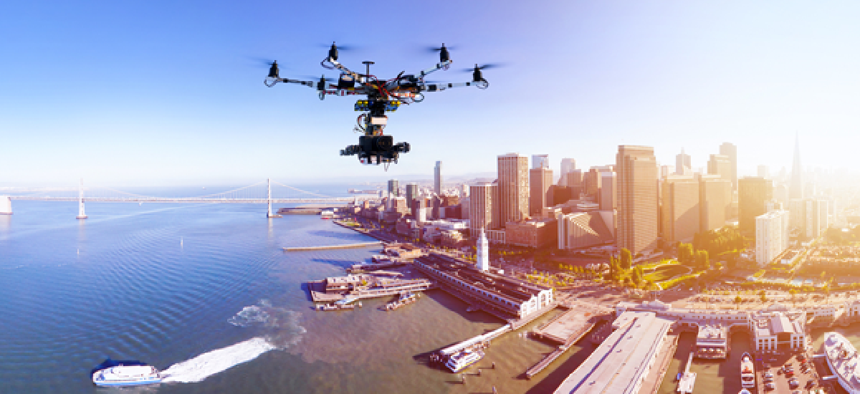Urgency for anti-drone tech increases

While the Department of Homeland Security is asking developers for anti-drone tech, the military is having problems of its own.
With the number of privately operated drones on the rise, the Department of Homeland Security wants to be sure it can counter a threat posed by a weaponized drone or one controlled by a hostile operator.
Under the Technical Assessment of Counter Unmanned Aerial Systems Technologies in Cities, or TACTIC program, DHS’s Science and Technology Directorate issued a call for developers of anti-drone systems to take part in assessments for technology to detect, identify and track small unmanned aerial systems that might be a threat to people or infrastructure.
According to contracting documents, testing will be done "under urban clutter conditions," in which spectrum availability and line-of-sight issues will challenge operators.
ST&T said the TACTIC program will be conducted in two parts. The first will be this summer when it will bring in technology developers in a "familiarization assessment." That assessment, S&T said, will allow developers to test their counter UAS systems under urban conditions and make changes as needed. The second part, held in the fall of 2017, will be an assessment to quantify system performance, it said.
In a related development, a top U.S. military officer told a congressional panel that the increasing number of suspicious drones around secure military locations is becoming something of a problem for the armed services.
In written testimony for a March 8 House Armed Services Committee hearing on the military's Assessment of Nuclear Deterrence Requirements, Air Force Gen. John Hyten, the commander of U.S. Strategic Command, said work is underway to counter that threat.
"Of recent concern have been the unauthorized flights of unmanned aerial systems over Navy and Air Force installations," he said. "These intrusions represent a growing threat to the safety and security of nuclear weapons and personnel. Both the Navy and Air Force are working to field counter-UAS capabilities that can effectively detect, track, and, if necessary, engage small UAS vehicles."
NEXT STORY: Stay Tuned: Route Fifty Is Reporting From SXSW





